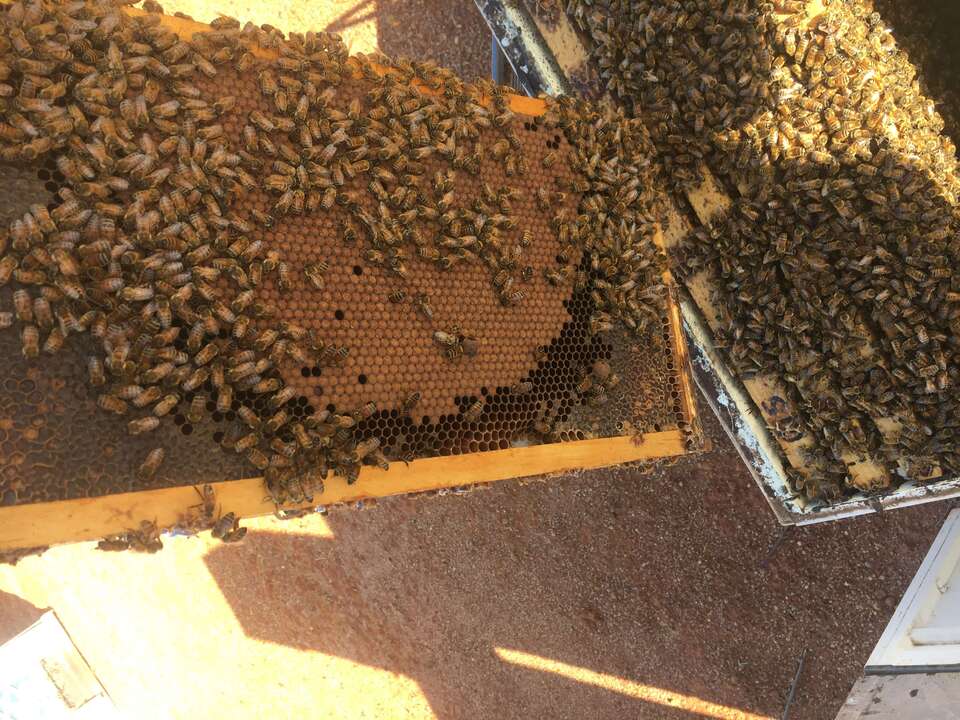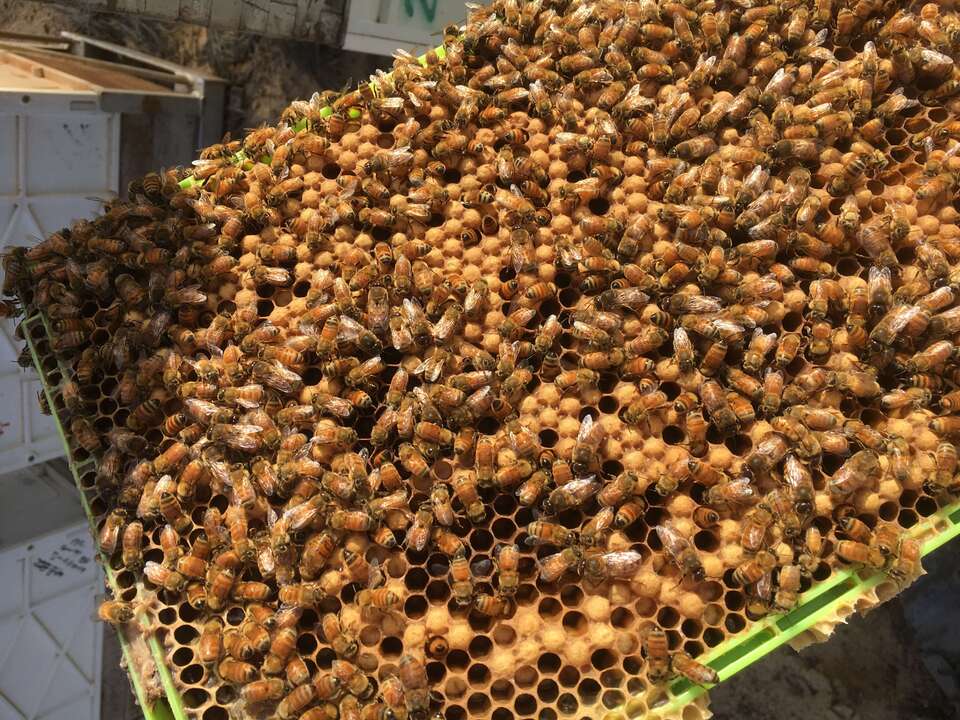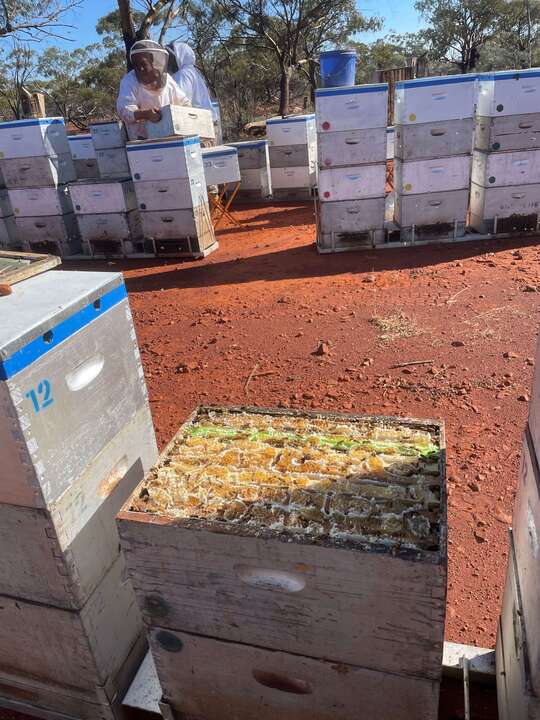With over 40 years in the Beekeeping industry, most of what David Leyland from Bees Neez Apiaries knows is from experience. By recording what each season brings and how his bees have performed, this historical knowledge allows David to make smarter choices when planning for the coming seasons. Bees Neez Apiaries run 1000 hives across Western Australia. As far East as Paynes Find and the Goldfields, North to Kalbarri or South to Esperance. He travels to where his bees will be most comfortable, resulting in a higher honey flow. This variety of trees allows for more foraging and collecting of different nectar and pollen which gives the bees a mixture of vitamins to be able to produce that whole food they need to survive.
As cool Autumn days turn to Winter, beekeepers are starting to relocate hives to the North of Perth to the warmer climate. With the bees, it is important to ensure the conditions are good so that they have a constant supply of nectar and pollen. Beehives are placed on sites where they can maintain health and strength on good nectar and pollen-producing plants so that they will be strong and ready for the Spring season. For some beekeepers honey harvesting is finished, others will continue until the end of May. Then the hives are left until August or September before harvesting again.





This period could be considered the bee’s holiday. So, they must be left in a position to allow self-sufficiency. They should be ticking along happily doing whatever bees do normally. They may still forage for food if they need it but otherwise will preference raiding the stores within the hive. Access to water is still important but you may notice their use will be minimal. If you look inside your hive, you should see a cluster of bees that covers all the brood frames and honey frames in the super. If they’re not getting any fresh nectar to consume, they eat the stores left for them. This means they may take from the hives honey supers, or they may take pollen from the brood box. This results in the brood nest getting smaller, most likely if there are not a lot of natural stores coming in. Generally, the bees will act this way until the 22nd of June – the shortest day of the year. Then they automatically know to start thinking about expanding the brood nest if the conditions are right for them. The days get longer, there are more natural resources i.e., nectar and pollen to collect. They’ll slowly expand out to grow their resources again.
If you are in the South of WA, ensure they’re left with a full box on top, so they don’t have to leave the warmth of their hive to source food. Or if your hive is in the shade, you can paint the lid or hive black to help absorb the sun during the day and keep them warm at night. Bees monitor their temperature, keeping it at a natural 33 degrees. They expend energy to bring it back to temperature so don’t go sticking your head in too frequently.
While your bees are happy maintaining themselves, Winter is a great time to perform maintenance checks on your equipment so it’s ready before you need it. Have a look at any frames in empty boxes, cull your old ones and replace them with foundation frames. Make sure empty boxes are in sound condition no rot or holes, consider if they need a repaint. Check the beehive itself for no gaps or holes and seal if necessary to help make the hive a little warmer.
Otherwise, your backyard helpers will be back to buzzing around in your garden come Spring.
If you’d like to learn more about these amazing insects, head to the BICWA website and bee sure to check out the Honey Month Events each May.




